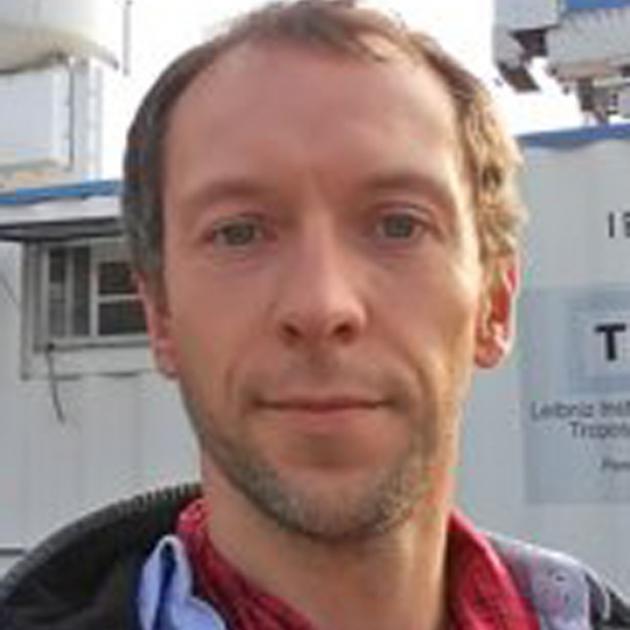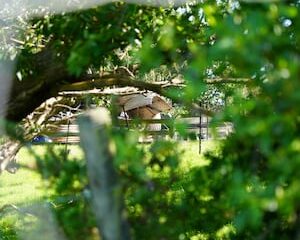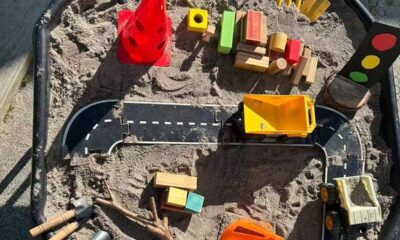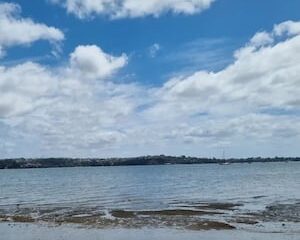Science
Researchers Launch Laser Study on Aerosols in New Zealand

A new atmospheric research project is set to begin at the MetService site near Invercargill Airport, New Zealand, utilizing a laser beam to study aerosols and their impact on the atmosphere. The project, named goSouth-2, is a collaboration between several institutions in Germany and New Zealand, aimed at gaining insights into how airborne particles influence cloud formation and climate.
The German partners in this initiative include the Meteorological Institute of the University of Leipzig and the Leibniz Institute for Tropospheric Research (TROPOS). The New Zealand partners are MetService, the University of Canterbury, and The Air Quality Collective. The project will officially open on September 3, 2023, with five TROPOS staff members currently setting up equipment at the research site.
According to Dr. Patric Seifert, a researcher from TROPOS, aerosols—tiny particles suspended in the air—originate from various sources both on land and at sea. These particles include salt, dust, pollen, and emissions from smoke or volcanic activity. Dr. Seifert explained that aerosols play a crucial role in cloud formation by acting as nuclei for water droplets to attach to. He noted, “The less aerosol particles are available, the less cloud particles can form, and vice-versa.”
The southern tip of New Zealand offers a unique setting for this research due to its atmospheric conditions. When air masses approach from the Antarctic, the atmosphere is often very clean, contrasting sharply with the more polluted conditions that occur when air masses flow in from Australia. By examining the differences in aerosol content between these air masses, the research team aims to enhance understanding of how clouds respond to variations in aerosol levels.
Dr. Seifert highlighted that atmospheric and climate models have historically struggled to accurately simulate cloud behavior over the Southern Ocean compared to the northern hemisphere. He suggested that the discrepancy in aerosol levels may be a key factor in this difference, as more data is available for the northern hemisphere, which is generally more polluted.
Invercargill was chosen as the research site not only for its unique atmospheric conditions but also for the logistical support available to facilitate the operation of equipment and staff accommodations. MetService has previously conducted significant observations at this location, including long-term weather balloon soundings, precipitation measurements, and assessments of solar and thermal radiation.
While the majority of the data collection will occur through land-based instruments, residents of Invercargill can expect to see a green laser beam in the sky near the airport. Dr. Seifert explained, “Our lidar [light detection and ranging] systems emit laser pulses to investigate the aerosols.” The beam is fixed, and airport personnel have been informed about its presence.
In addition to lidar technology, researchers will also employ radar systems to monitor and analyze cloud formations and precipitation. The TROPOS team will remain on site for a duration of 18 months, with approximately 15 researchers in Germany dedicated to data analysis.
This new project follows the goSouth-1 study, which took place in 2022 at Pahia, located roughly 50 kilometers from Invercargill. That initial study, lasting one month, utilized less extensive equipment compared to the current goSouth-2 initiative.
Through this comprehensive research, scientists hope to unlock new insights into the interactions between aerosols and clouds, ultimately contributing to improved climate models and a better understanding of global atmospheric processes.
-

 World1 week ago
World1 week agoPrivate Funeral Held for Dean Field and His Three Children
-

 Top Stories2 weeks ago
Top Stories2 weeks agoFuneral Planned for Field Siblings After Tragic House Fire
-

 Sports3 months ago
Sports3 months agoNetball New Zealand Stands Down Dame Noeline Taurua for Series
-

 Entertainment3 months ago
Entertainment3 months agoTributes Pour In for Lachlan Rofe, Reality Star, Dead at 47
-

 Entertainment2 months ago
Entertainment2 months agoNew ‘Maverick’ Chaser Joins Beat the Chasers Season Finale
-

 Sports3 months ago
Sports3 months agoSilver Ferns Legend Laura Langman Criticizes Team’s Attitude
-

 Sports4 weeks ago
Sports4 weeks agoEli Katoa Rushed to Hospital After Sideline Incident During Match
-

 Politics2 months ago
Politics2 months agoNetball NZ Calls for Respect Amid Dame Taurua’s Standoff
-

 World2 weeks ago
World2 weeks agoInvestigation Underway in Tragic Sanson House Fire Involving Family
-

 Top Stories2 weeks ago
Top Stories2 weeks agoShock and Grief Follow Tragic Family Deaths in New Zealand
-

 Entertainment3 months ago
Entertainment3 months agoKhloe Kardashian Embraces Innovative Stem Cell Therapy in Mexico
-

 World4 months ago
World4 months agoPolice Arrest Multiple Individuals During Funeral for Zain Taikato-Fox




















